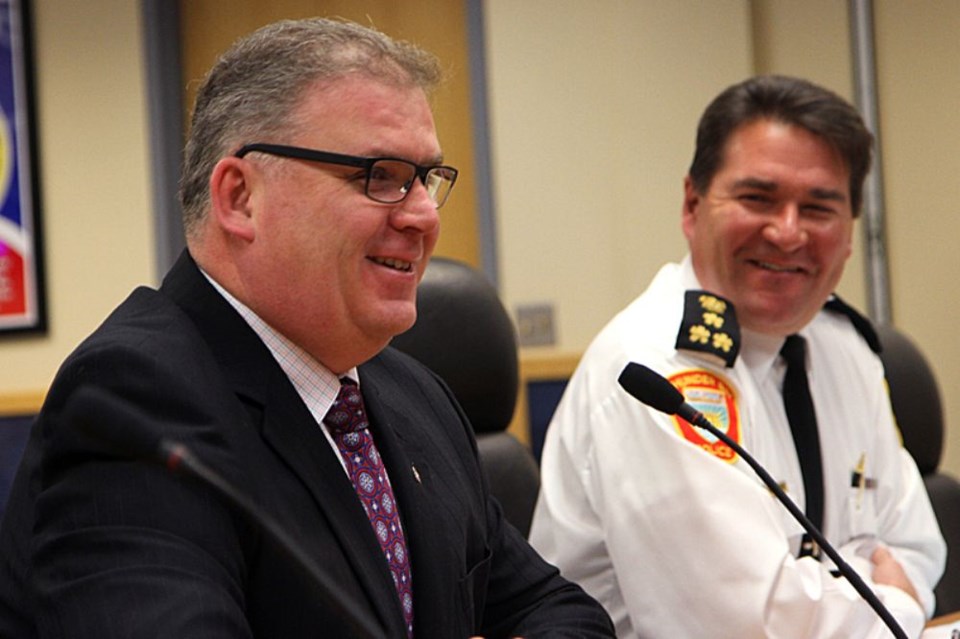THUNDER BAY – The chief of Superior North EMS is hopeful a new community paramedicine program can help alleviate the burden on emergency responders, including police officers.
Norm Gale appeared before the Thunder Bay Police Services Board’s monthly meeting on Tuesday and outlined details of how the program will operate when it is up and running. He said it’s clear a strategic solution is needed as the volume of 911 calls has increased by 80 per cent over the past 10 years and show no signs of slowing down.
Most of those calls, which can generate a three tiered response from paramedics, police and firefighters, are not genuine emergencies and involve an aging population with chronic illnesses or a marginalized population.
“The reality is a number of our 911 calls are also responded to by police officers and neither police officers nor paramedics are ideally situated or well positioned to provide the level of care for why people are calling,” he said after the meeting.
“If we can find ways not only to divert those calls but to get those people the care we need it’s a win-win.”
Police Chief J.P. Levesque said he welcomes the launch of the program as it should allow officers to focus more on their policing duties.
It also could help increase the efficiency of all three emergency response services.
“We’re looking forward to the program kicking off. We’re hoping it lightens our load,” Levesque said.
Gale said community paramedicine, which has received $200,000 from the province to start up, has the potential to benefit thousands of people in the district.
The program will be built around using paramedics who are on modified duties or are underutilized at less busy stations in the district.
They will work directly in the community to regularly visit patients and monitor their health in the hopes of preventing non-emergency 911 calls.
Patients in the program will be identified by partners such as the Thunder Bay Regional Health Sciences Centre, St. Joseph’s Care Group and the Shelter House.
“Community paramedics will partner with primary health-care providers and we will enroll patients into the program and we’ll use evidence to show what the impact on the system is,” Gale said.
There is no firm timeline for when the program will begin.
